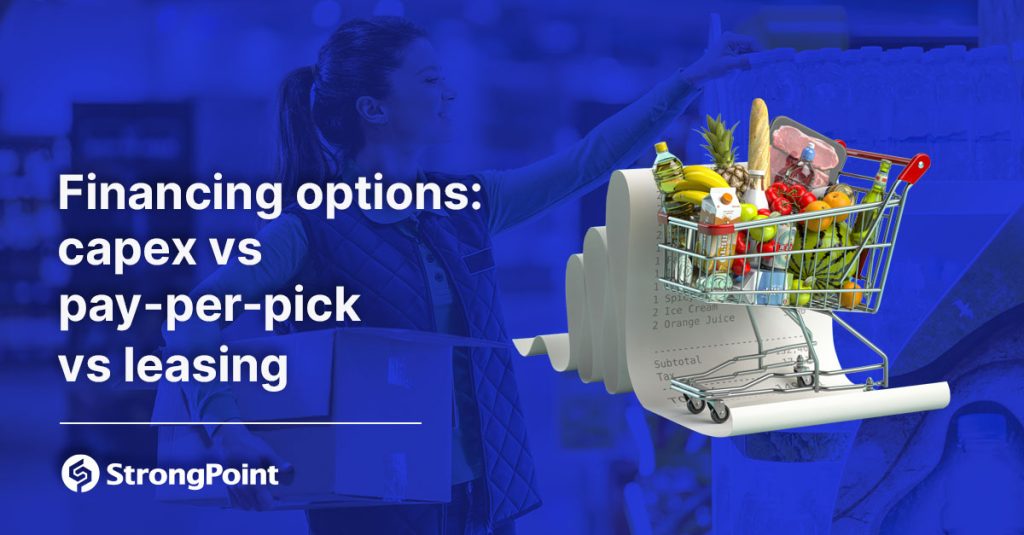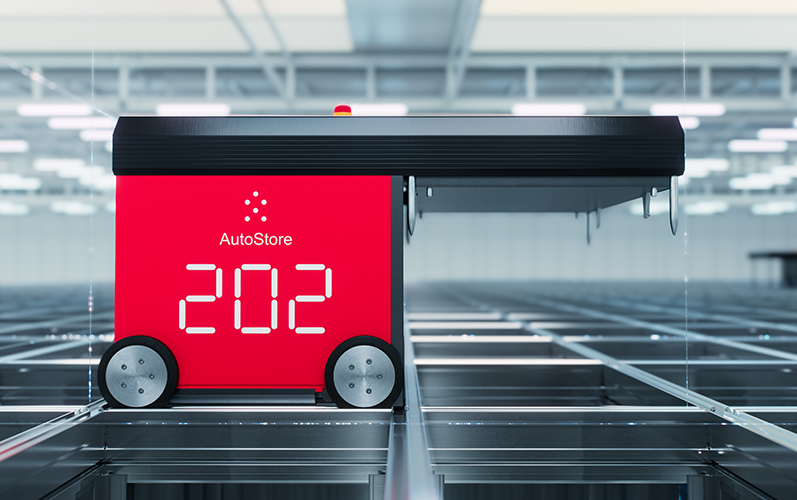Financing options: capex vs pay-per-pick vs leasing
This blog post is part 7 of 7, in a series that will discuss each key point from the StrongPoint webinar “Top 7 things to consider when doing grocery automation“.

When it comes to financing automated solutions, retailers must carefully consider the available options and their financial implications. Here are a few key points to help guide your decision-making process.
Option 1: Capital Expenditure (Capex)
Capex involves upfront investment in equipment and infrastructure, which is paid over a fixed period of time. The advantage of Capex is that it provides you with immediate control over the hardware and infrastructure assets, allowing you to onboard them as soon as the project is complete. In the long run, investing in infrastructure upfront can often prove to be more cost-effective. It enables you to capitalize on the benefits and cost savings of automation over an extended period.
Option 2: Leasing
Leasing offers a lower initial cost compared to Capex. It allows you to acquire the necessary hardware and infrastructure without a significant upfront investment. Leasing provides the advantage of scalability, enabling you to easily adjust your infrastructure according to demand fluctuations. For instance, you can deploy robots during seasonal peaks and return them as shopping trends change. Leasing allows for greater flexibility in adapting to changing business requirements while minimizing the initial financial outlay.
Option 3: Pay-per-Pick (Usage-based)
Pay-per-pick models offer a cost-efficient approach. This model is based on usage, ensuring that you only pay for the resources you actually use, although there is often a minimum commitment. It is particularly advantageous for businesses with unpredictable or seasonal demand patterns, because it eliminates the need for investing in fixed infrastructure. The strength of this model lies in its scalability: you can dynamically adjust the allocation of resources based on demand fluctuations, ensuring you have the necessary capacity to handle peak periods without incurring unnecessary costs during slower periods.
When considering the financial aspects of these options, it is vital to evaluate the lifetime costs of each solution. Assessing the end-of-cost in both the short and long term is crucial for making an informed decision. Our team of financial experts at StrongPoint will work closely with you to analyze these options, calculating the ROI and IRR for each scenario, and we’ll help determine the most cost-effective and strategically aligned payment plan.
We understand that financial considerations are paramount, and our approach is centered around providing you with comprehensive financial guidance tailored to your specific needs. Financing your solution requires a careful assessment of the available options and their financial implications. Whether you opt for Capex, leasing or a usage-based model, it is important to consider the short-term and long-term cost effectiveness of each approach.
Our financial experts are here to guide you through this process, ensuring that your investment aligns with your strategic goals
Read more about automated micro fulfilment centres

Micro-Fulfillment Centers (MFC)
Store up to 4x more items in the same space, and have them retrieved by robots. by As an AutoStore partner, StrongPoint offers hyper-efficient micro-fulfillment solutions tailor-made for grocery retailers and other industries. But there’s more: StrongPoint will soon be the first in the world to install an AutoStore grid with a frozen zone for automated picking of frozen items.
Learn more